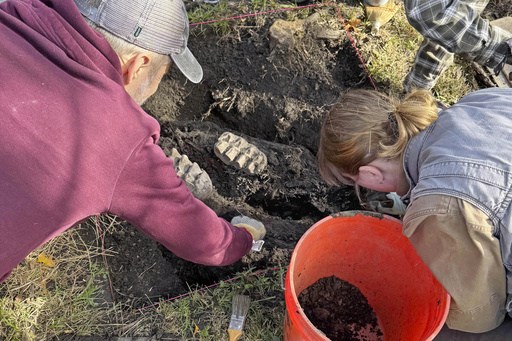SCOTCHTOWN, N.Y. — Researchers are celebrating the recent finding of a fossilized mastodon jaw after a local resident uncovered it while working in his garden this year. This remarkable discovery, which includes two large teeth, was made in late September in a backyard in Scotchtown, a small hamlet situated approximately 70 miles northwest of New York City, according to officials from the New York State Museum.
The homeowner, who has chosen to remain anonymous, initially mistook the fossilized teeth for baseballs. Upon closer examination, as explained by Robert Feranec, the museum’s director of research and collections and curator of Ice Age animals, he soon realized they were actually teeth belonging to a mastodon.
Further excavations carried out by staff from the museum, in collaboration with the State University of New York’s Orange County campus, revealed not only a fully intact and well-preserved mastodon jaw but also additional fragments, including a piece of a toe bone and a rib. Cory Harris, who chairs the behavioral sciences department at SUNY Orange, noted the significance of these findings. “While the jaw is certainly the highlight, the accompanying toe and rib fragments provide essential context and open doors for further research,” he remarked. “We also plan to investigate the area further to see if there are additional preserved bones to discover.”
According to officials at the state museum based in Albany, this newly found jaw marks the first complete mastodon jaw identified in New York in over a decade. To date, more than 150 mastodon fossils have been discovered across the state, with roughly one-third located in Orange County, the same vicinity as this recent finding.
Feranec emphasized that the recently recovered jaw offers “a valuable opportunity for studying the ecology of this incredible species, which will deepen our understanding of the Ice Age ecosystems specific to this area.” Museum officials indicated that the fossils will undergo carbon dating and analysis to uncover details about the mastodon’s age, diet, and habitat throughout its life. Furthermore, they plan to showcase the findings to the public in 2025.



